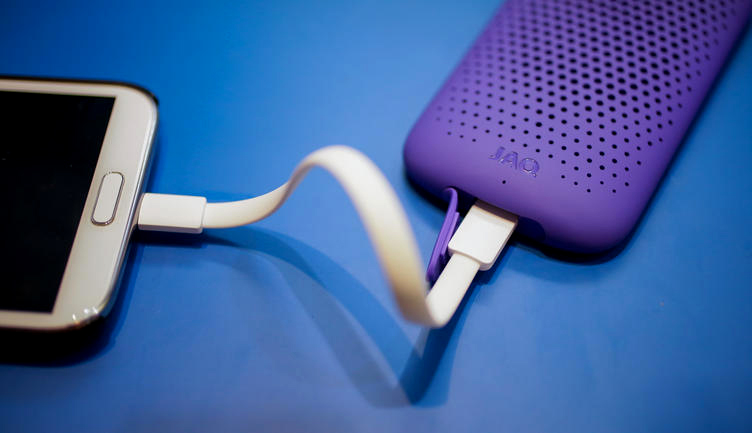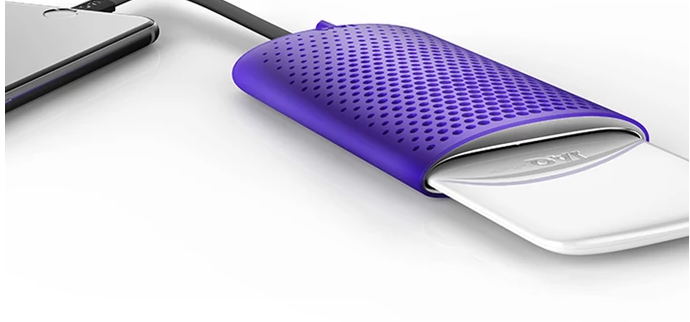A sleek new device has been unveiled by researchers at the Swedish innovation startup, MyFC, and it’s something we can all benefit from. Introduced at CES, the fuel cell charger known as JAQ is small enough to fit in your back pocket, and it uses salt-water and oxygen to convert chemical energy into electricity. It then uses that electricity to charge your phone.

The JAQ charger uses salt-water and oxygen to convert chemical energy into electricity. Image source: JAQ.
So what does this portable godsend of a device consist of? It’s equipped with a credit card-shaped power card and a hollowed-out port that’s about the size of a smartphone. The card is what contains the salt-water, which fuels electricity-producing chemical reactions when you slip the card into the port. In order to transfer that electricity to your phone’s battery, you simply plug your phone into the port with a standard cable.
The device works by combining two reactants: hydrogen and oxygen, which are enclosed in the same space. Hydrogen atoms from the salt-water in the power card enter the 10 fuel cells at the anode, where, according to the company, a chemical reaction strips them of their electrons.

To transfer electricity to your phone’s battery, simply plug your phone into the port with a standard cable. Image source: JAQ.
Because the hydrogen atoms are stripped of their electrons, they become positively charged hydrogen ions and are able to move through the fuel cell’s electrolyte, which is a membrane-like substance that limits the movement of ions within the cell. At the cathode end of the cell, oxygen from the air then enters and combines with the hydrogen ions that made it through the electrolyte and electrons returning from the electrical circuit. The results of this reaction? Water.
Currently the JAQ water charger is not available for purchase, but the company anticipates that the device will be ready for distribution later this year. Each card will sell for $1.50.
Source: Live Science
Advertisement
Learn more about Electronic Products Magazine





